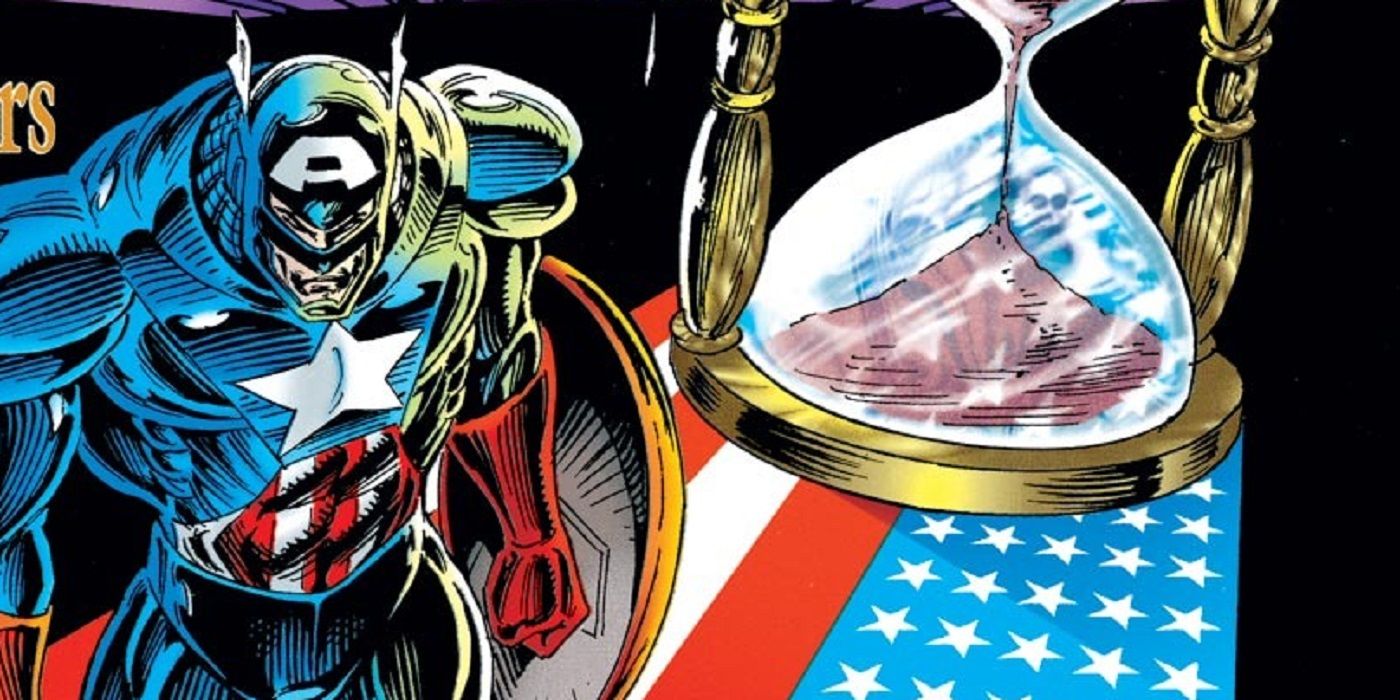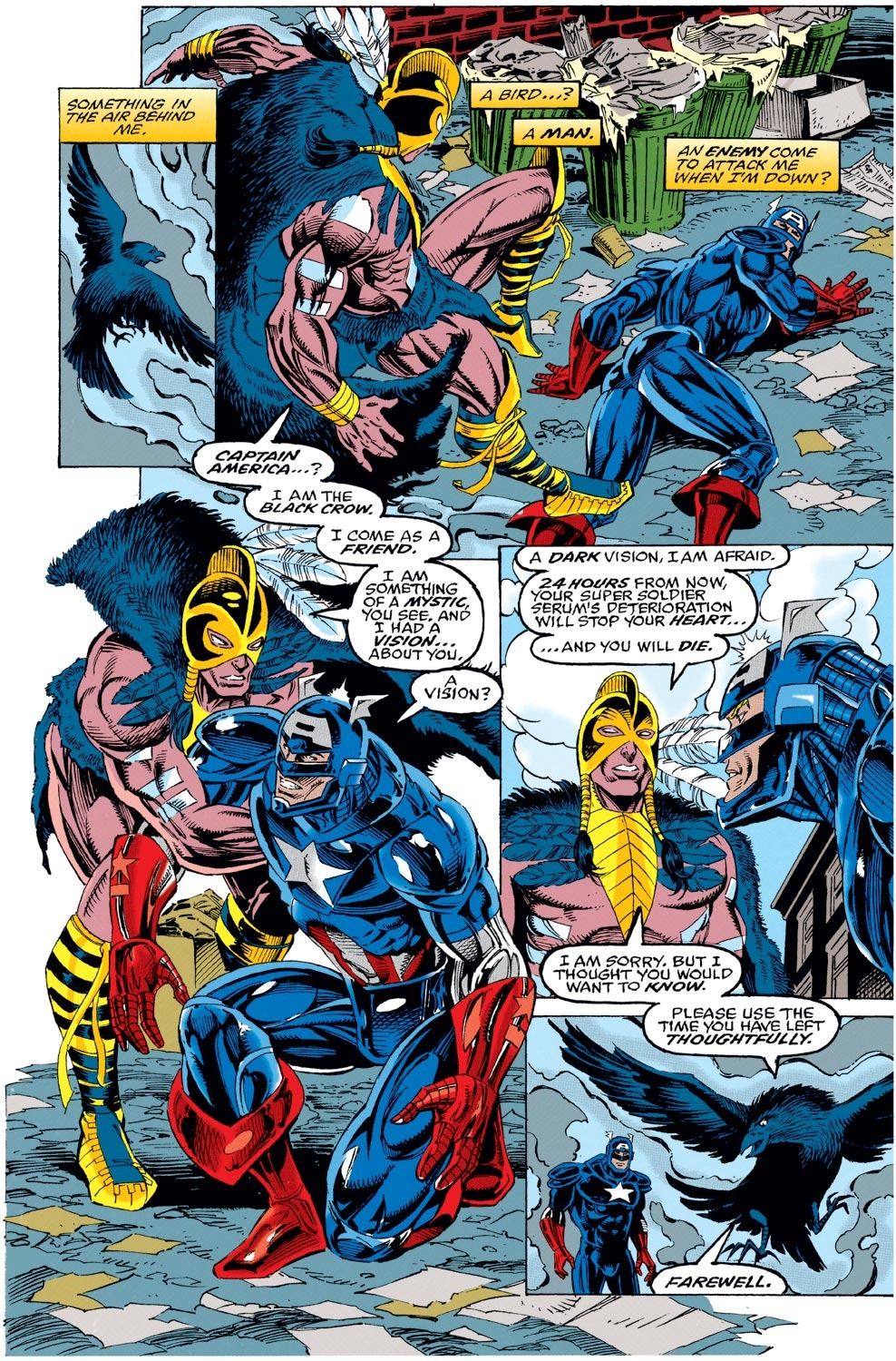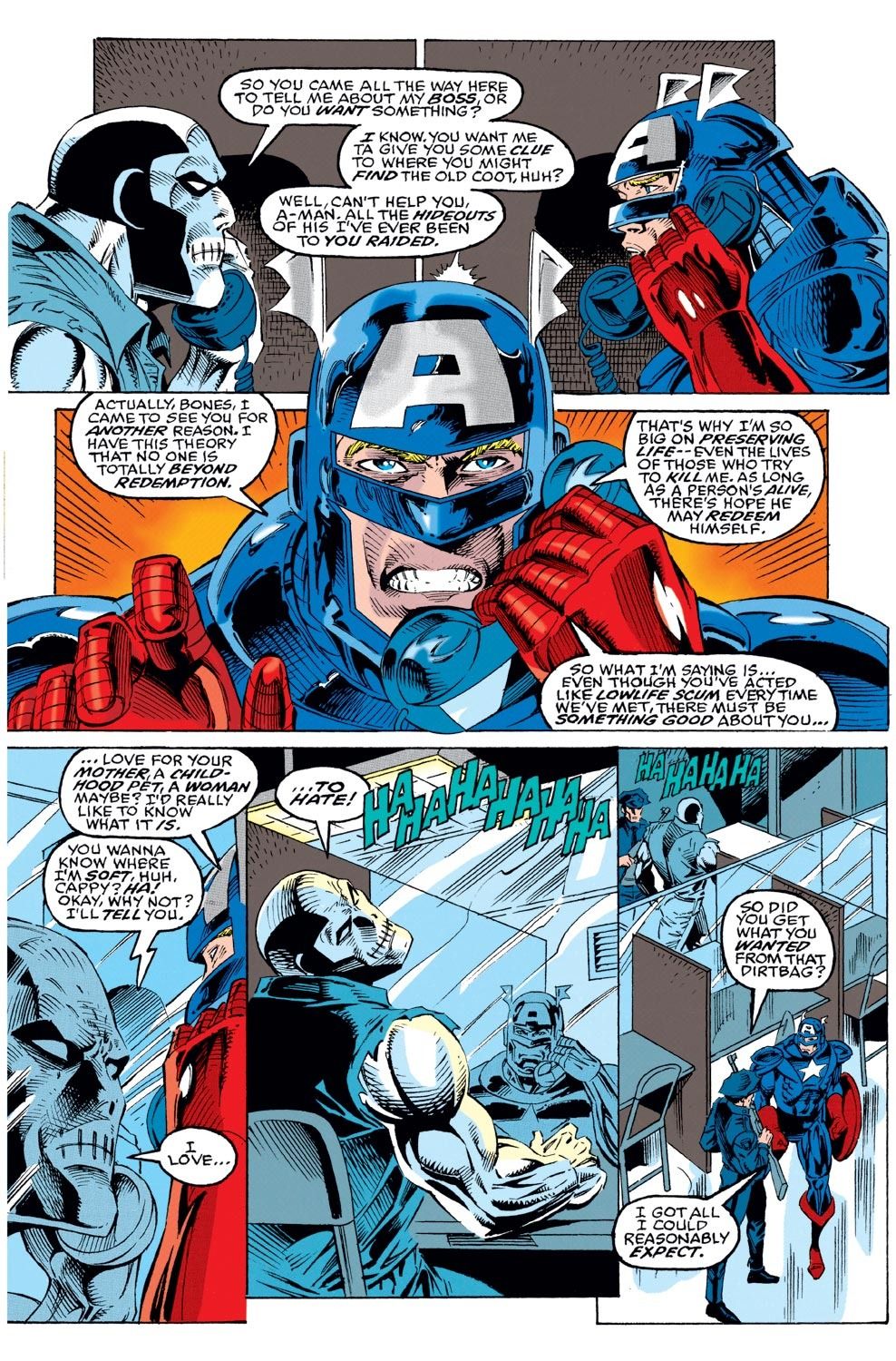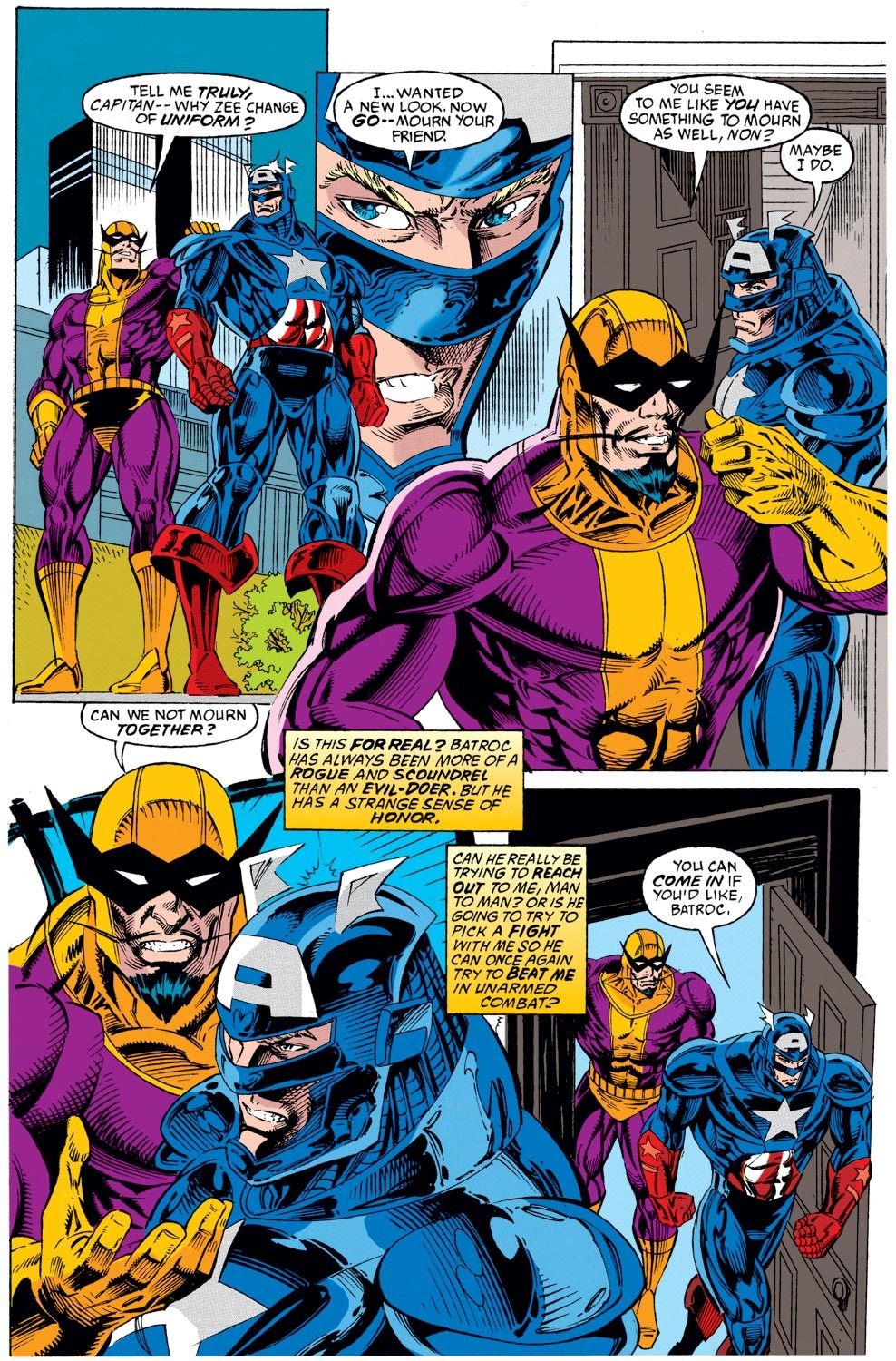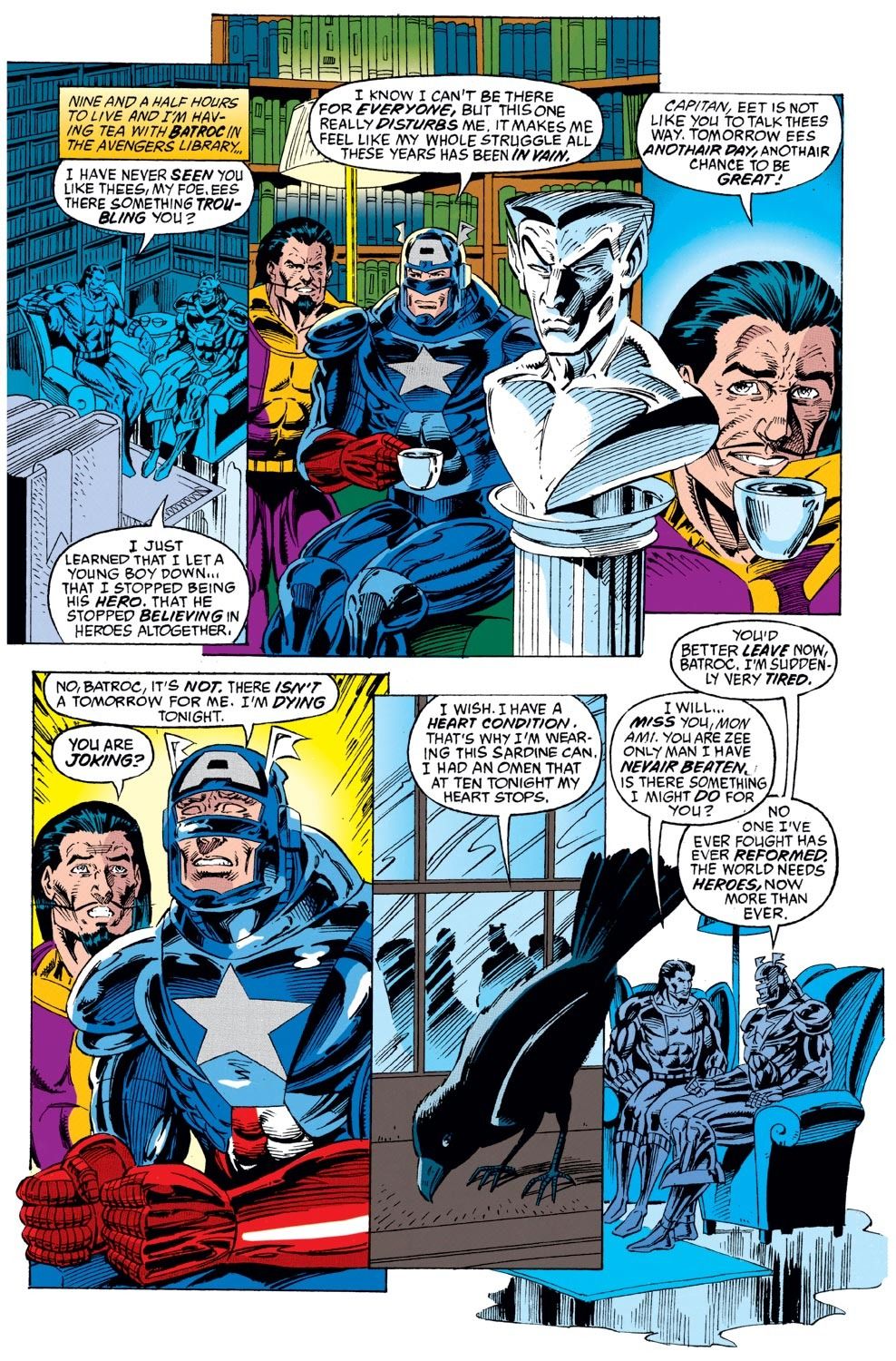This is "Look Back," a feature that I plan to do for at least all of 2019 and possibly beyond that (and possibly forget about in a week, who knows?). The concept is that every week (I'll probably be skipping the four fifth weeks in the year, but maybe not) of a month, I will spotlight a single issue of a comic book that came out in the past and talk about that issue (often in terms of a larger scale, like the series overall, etc.). Each week will be a look at a comic book from a different year that came out the same month X amount of years ago. The first week of the month looks at a book that came out this month ten years ago. The second week looks at a book that came out this month 25 years ago. The third week looks at a book that came out this month 50 years ago. The fourth week looks at a book that came out this month 75 years ago. The occasional fifth week looks at books from 20/30/40/60/70/80 years ago.
Today, we go back to July 1995 for the final issue of Mark Gruenwald's decade-long run on Captain America in Captain America #443 (by Gruenwald, Dave Hoover and Danny Bulanadi), where Captain America made an unusual choice of how to spend his final day on Earth.
In April 1985, Captain America writer Mike Carlin swapped duties with Gruenwald, who was the editor of the book. Carlin would become the editor of the series (when Carlin left to become an editor at DC, Don Daley took over for a while and then Ralph Macchio settled into a long run as the editor on the book, lasting for the rest of Gruenwald's run and then most of Mark Waid's run, as well) and Gruenwald started writing the book. Gruenwald remained on the book until July 1995.
Few comic book writers were quite as philosophical with their comic book runs as Gruenwald was with his Captain America work. Gruenwald was a methodical guy and there were certain things that he wanted out of his run, including expanding Captain America's Rogues, which he did nicely with the introduction of Flag-Smasher, Crossbones and the Serpent Society. He also used his run to kickstart the Scourge conceit, through which Gruenwald could reduce the amount of supervillains in the Marvel Universe (Gruenwald believed that there were too many super villains that weren't being used by anyone and so he introduced a character who killed off these "excess" villains).
However, the main conceit of Gruenwald's run was that Captain America stood for a specific sort of untarnished heroism that was missing in the comics of the era, and so much of Gruenwald's run involved examples of him contrasting Cap against these grim and gritty heroes. One of his most famous storylines involves Steve Rogers being replaced as Captain America by the glory hound, Super Patriot, thus showing how you really CAN'T just replace Captain America, especially not with a "grim and gritty" version of the character.
That, too, became an important part of Gruenwald's last major arc on the series, "Fighting Chance," where Cap discovers that the Super Soldier Serum in his body had effectively expired and is now killing him. "Fighting Chance" introduced four new America-themed characters, including the murderous vigilante, AmeriCop and an evil new Super Patriot. However, it also introduced Jack Flag and Free Spirit, two young heroes who represented a bright future for patriotic heroes. Eventually, Cap's condition got so bad that he needed a suit of armor to help him walk.
It all came to a head in Captain America #443, where Cap is visited by the spiritual character, Black Crow, who told Cap that he has 24 hours left to live...
Gruenwald really gets into the idea of what do you do when you have just 24 hours left to live? A super villain flies by soon after and Cap goes to capture him, but realizes that this is really not the way that he should spend his final days. He figures that he can just have the Avengers capture the supervillain. Cap debates whether he wants to spend his last day hunting down one of his outstanding nemeses, like Red Skull.
Instead, he goes to visit Crossbones, Red Skull's former enforcer, in prison, for both a clue about the whereabouts of the Red Skull and also an attempt to learn more about what drives Crossbones. He is disappointed in learning that there is not much there there with Crossbones...
Cap then touches base with the important people in his life, while mourning the loss of Sharon Carter, who had died years earlier (or DID she?). Cap's childhood friend, Arnie Roth, was sick from cancer and he actually passes away as Cap visits him in the hospital. In one really rough scene, Cap goes to visit the young computer hacker who helped Cap set up his emergency help line, only to discover that the boy's mother had been senselessly shot in the head and the kid berates Cap.
Then, oddly enough, Captain America runs into his old foe, Batroc, at Avengers Mansion!
Batroc is looking for Cap's help because someone is killing South American superheroes and villains, including one of Batroc's closest friends. Cap had actually resolved the case in the previous issue, so he tells that to Batroc. Batroc is pleased, but he is curious about Cap's new look. He offers to buy Cap a drink and Captain America takes these, some of the final hours in his life, to try to convince Batroc to reform and become a good guy.
That really speaks to Gruenwald's Cap beautifully. Here is a guy who really would spend his final hours trying to get a bad guy to stop being a bad guy. Gruenwald's Cap is so pure and noble that there are few things that you could ever expect from him that would tarnish that idealism. It was a fine way to finish out his run (Cap's body is missing at the end of the issue, something Gruenwald did to help set up Mark Waid's incoming Cap run, as the Red Skull saves Cap from dying, as he needs Cap's help).
If you folks have any suggestions for August (or any other later months) 2010, 1995, 1970 and 1945 comic books for me to spotlight, drop me a line at brianc@cbr.com! Here is the guide, though, for the cover dates of books so that you can make suggestions for books that actually came out in the correct month. Generally speaking, the traditional amount of time between the cover date and the release date of a comic book throughout most of comic history has been two months (it was three months at times, but not during the times we're discussing here). So the comic books will have a cover date that is two months ahead of the actual release date (so October for a book that came out in August). Obviously, it is easier to tell when a book from 10 years ago was released, since there was internet coverage of books back then.

